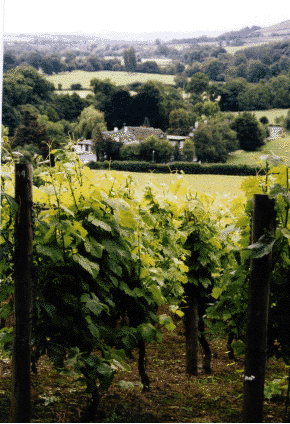Training system: Scott Henry
 The Scott Henry system was developed by the rocket scientist Scott Henry in California. The system aims to cut down on the
overproduction of vine leaves - often caused by rich soils, and the consequent loss of fruit.
The system allows a canopy UP and DOWN from a central pair of wires. Scott Henry reasoned that vines trained on this
method would receive more air, thus reducing the risk of fungal diseases. The system was observed at a cool climate
wine symposium by Dr. Richard Smart, who has introduced it world-wide.
The Scott Henry system was developed by the rocket scientist Scott Henry in California. The system aims to cut down on the
overproduction of vine leaves - often caused by rich soils, and the consequent loss of fruit.
The system allows a canopy UP and DOWN from a central pair of wires. Scott Henry reasoned that vines trained on this
method would receive more air, thus reducing the risk of fungal diseases. The system was observed at a cool climate
wine symposium by Dr. Richard Smart, who has introduced it world-wide.
 In the Eastern USA the single curtain HUDSON RIVER UMBRELLA is also used, with 48 to 60 buds retained on each downward spur.
This method takes advantage of the tendency of Amercican and French hybrids to grow downwards, and gets renewal
spurs into the sunlight. (My thanks to Bob Lanzendoen of the Maryland Wine Growers for this information. Have a look at their site at
www.marylandwine.com/mgga2/mggahome.htm
In the Eastern USA the single curtain HUDSON RIVER UMBRELLA is also used, with 48 to 60 buds retained on each downward spur.
This method takes advantage of the tendency of Amercican and French hybrids to grow downwards, and gets renewal
spurs into the sunlight. (My thanks to Bob Lanzendoen of the Maryland Wine Growers for this information. Have a look at their site at
www.marylandwine.com/mgga2/mggahome.htm


